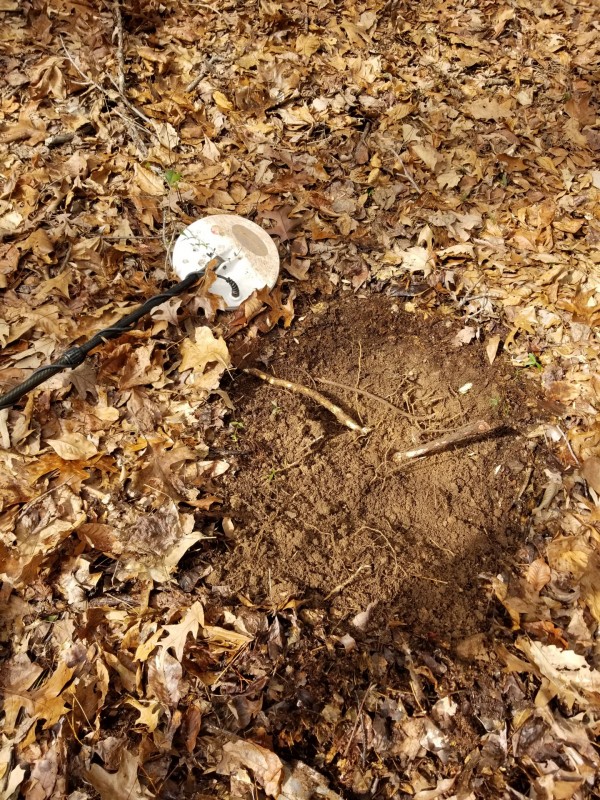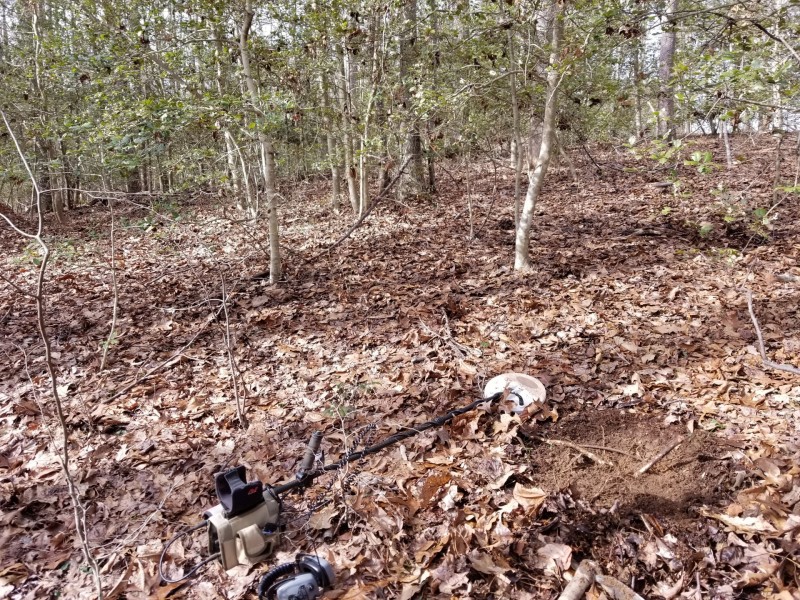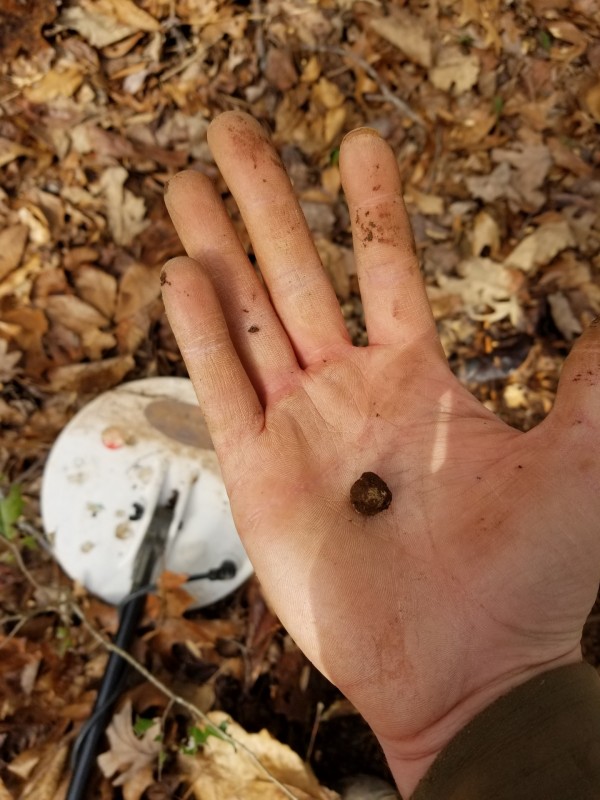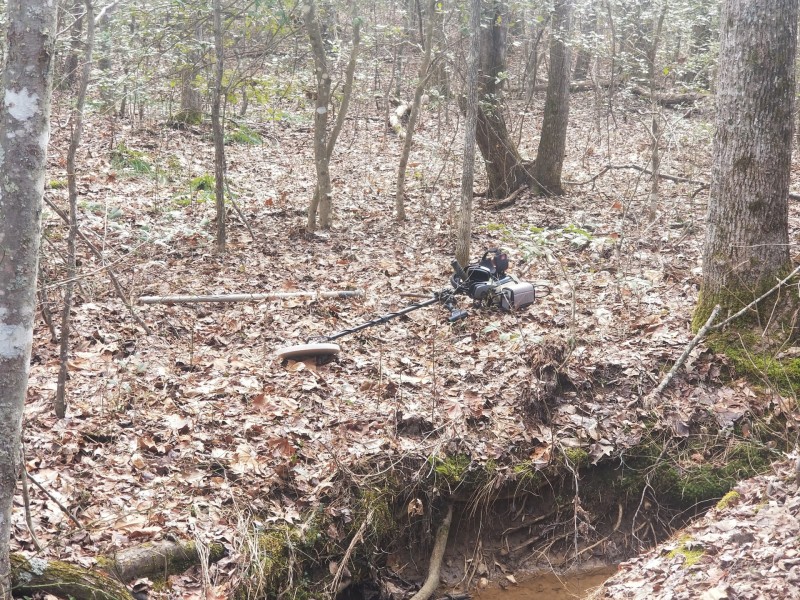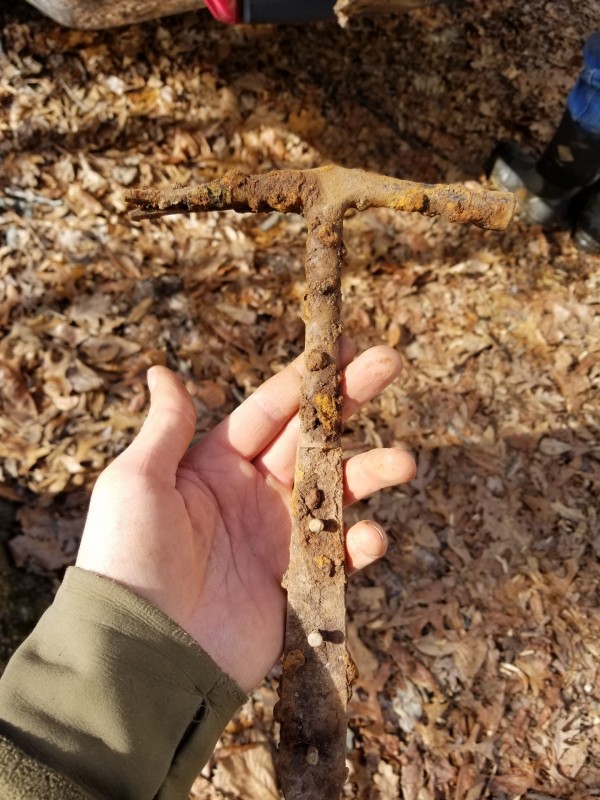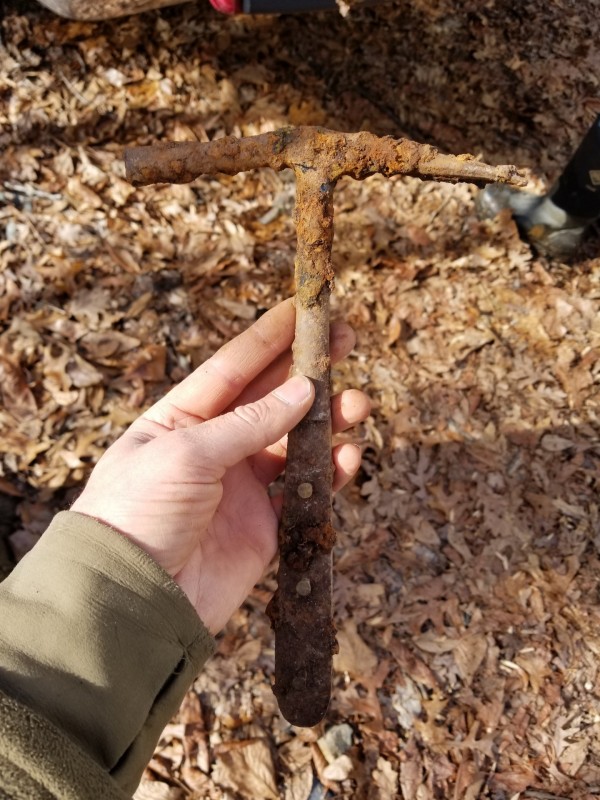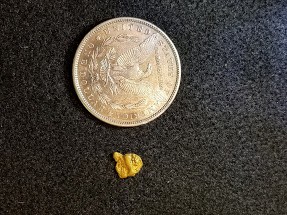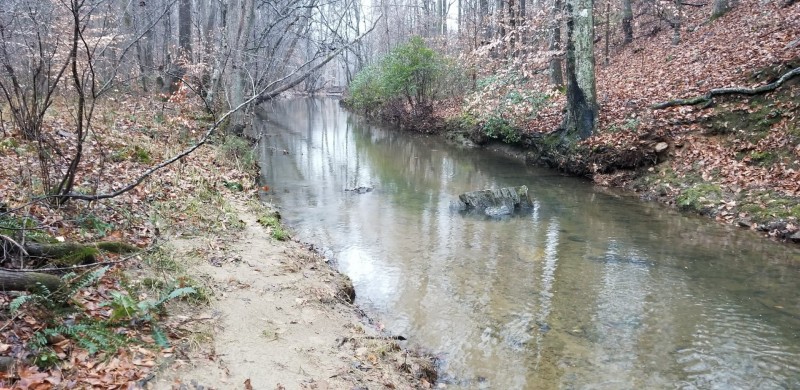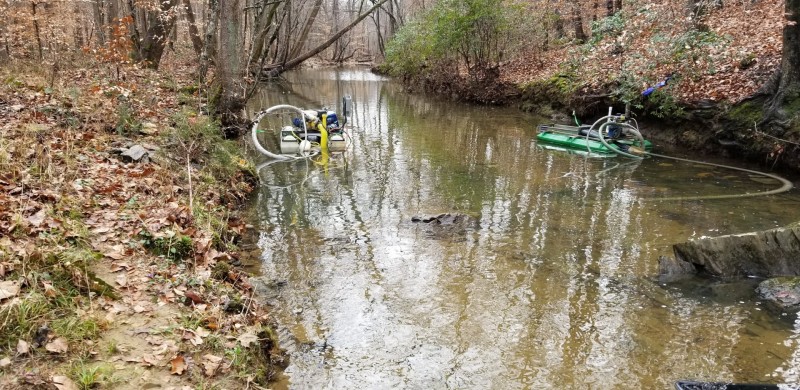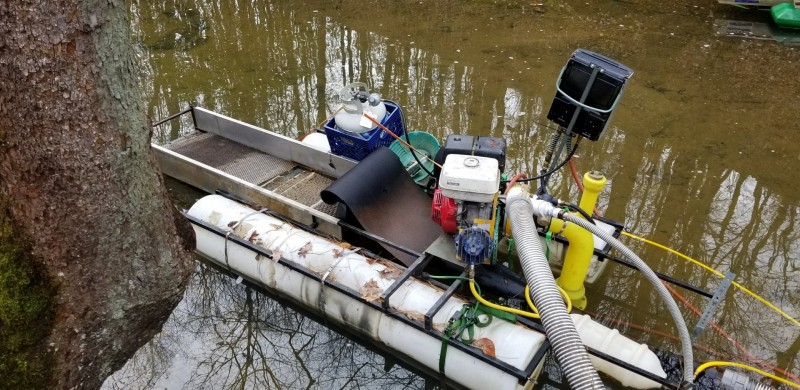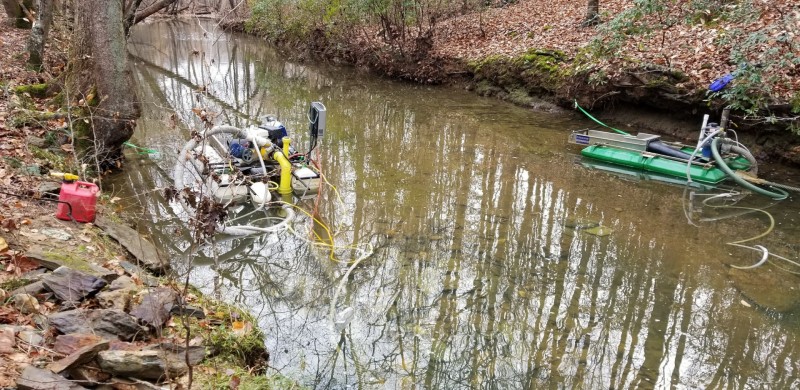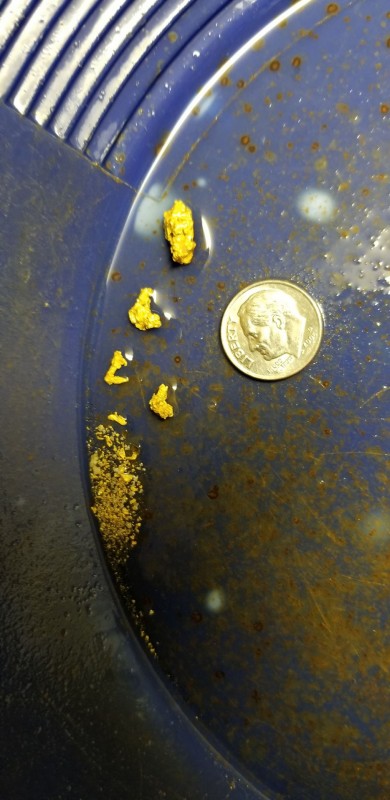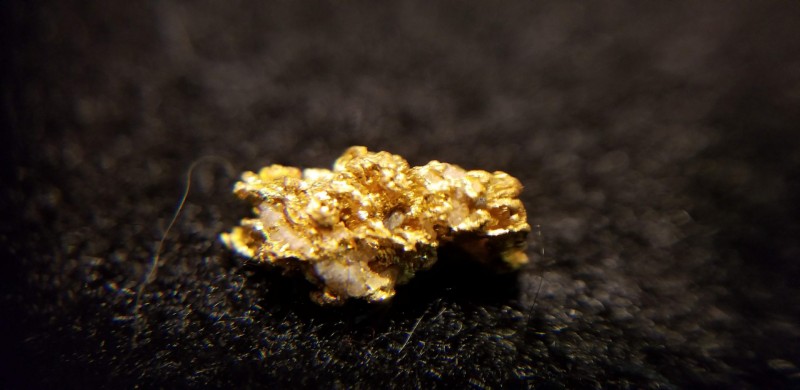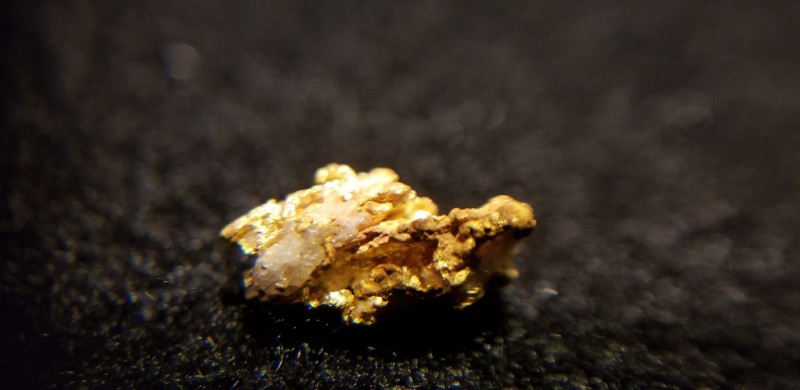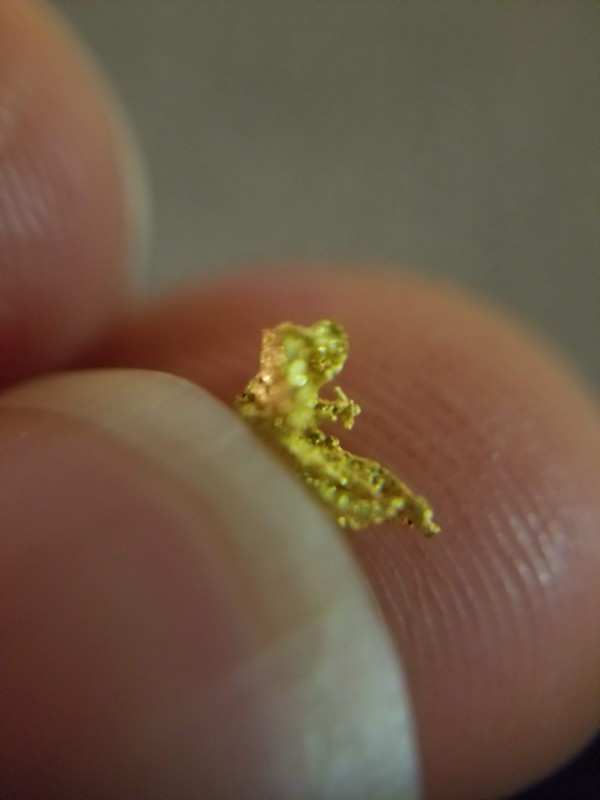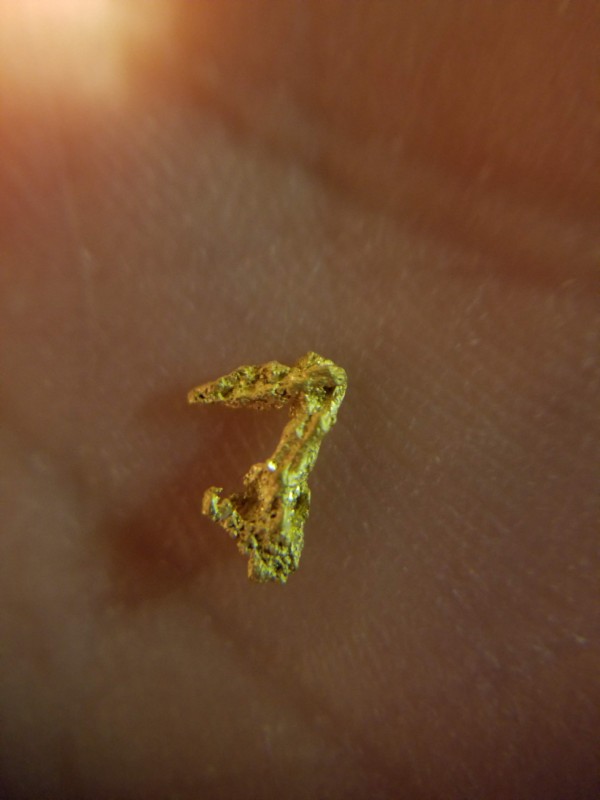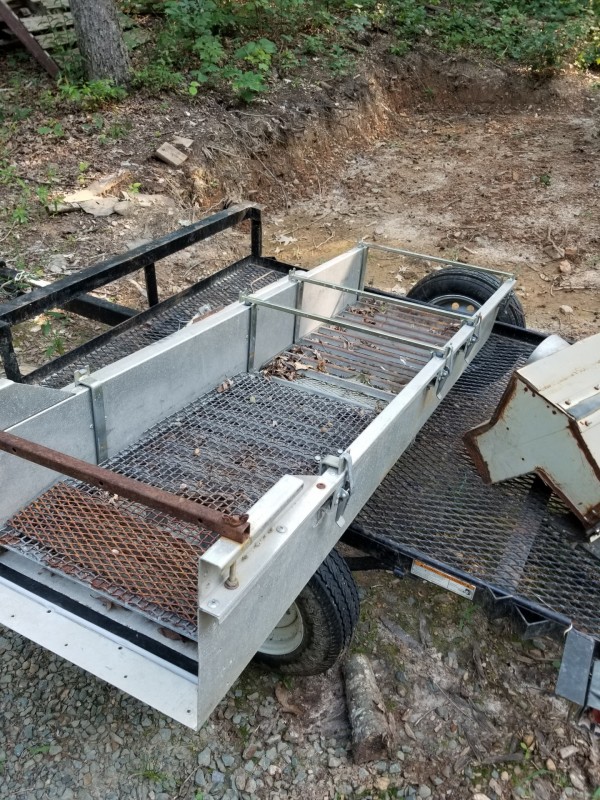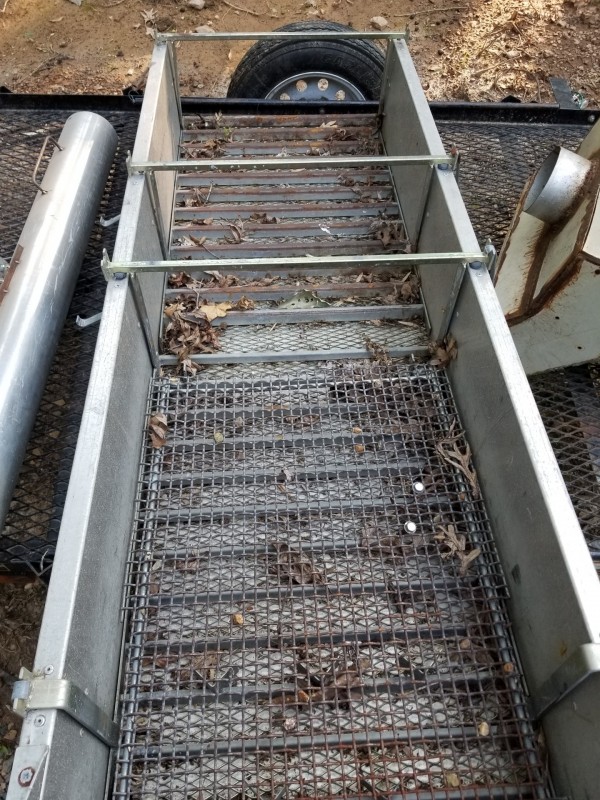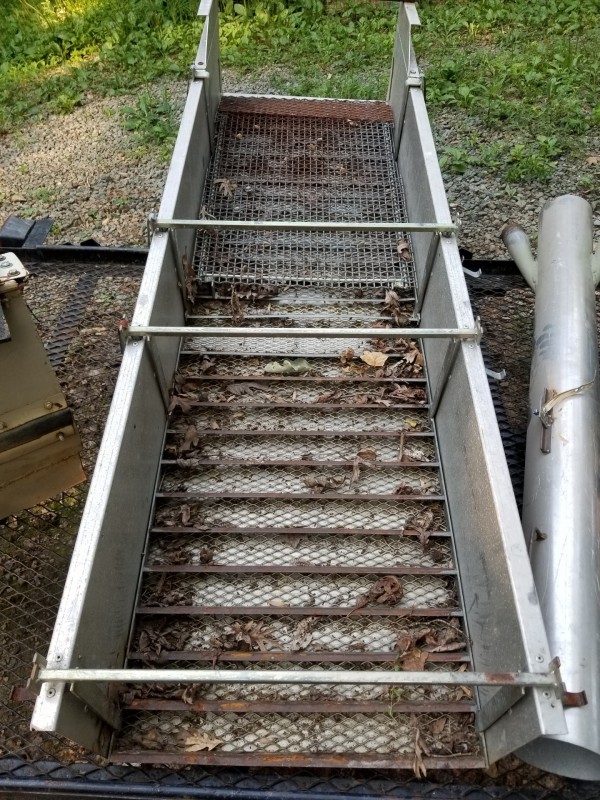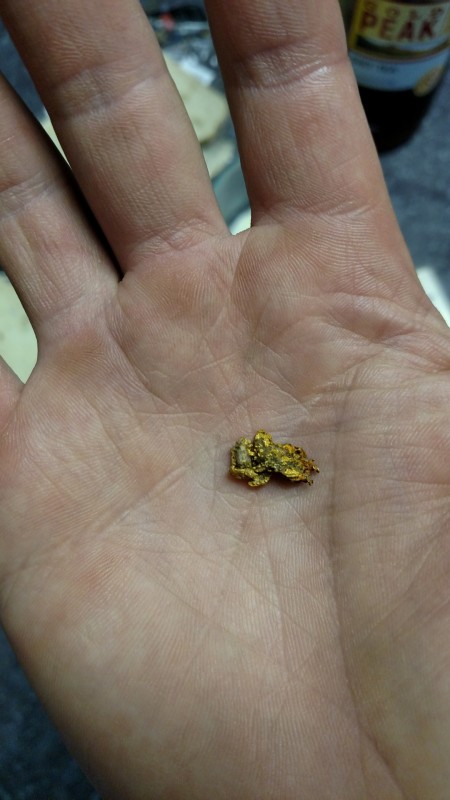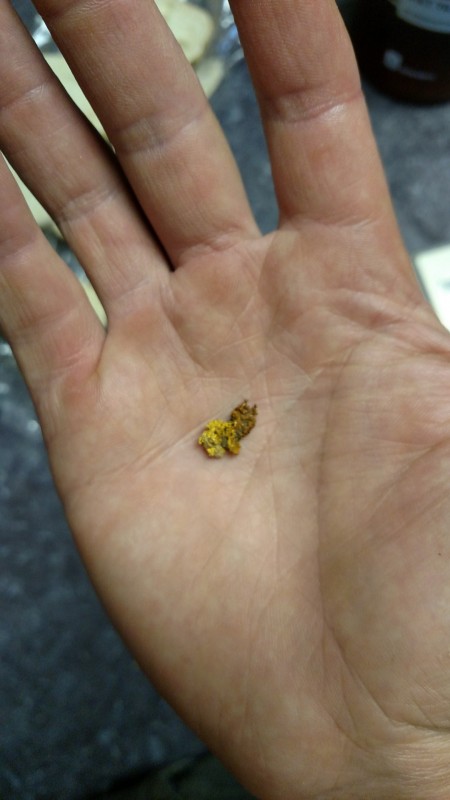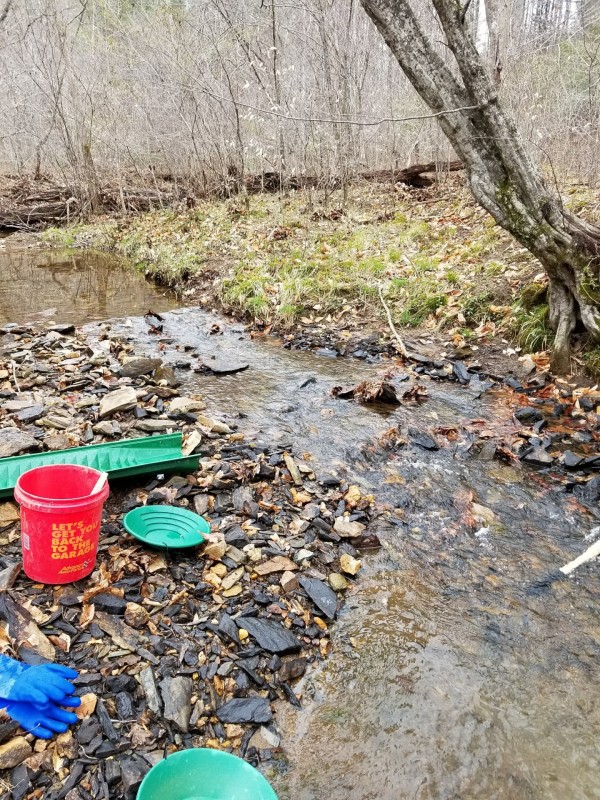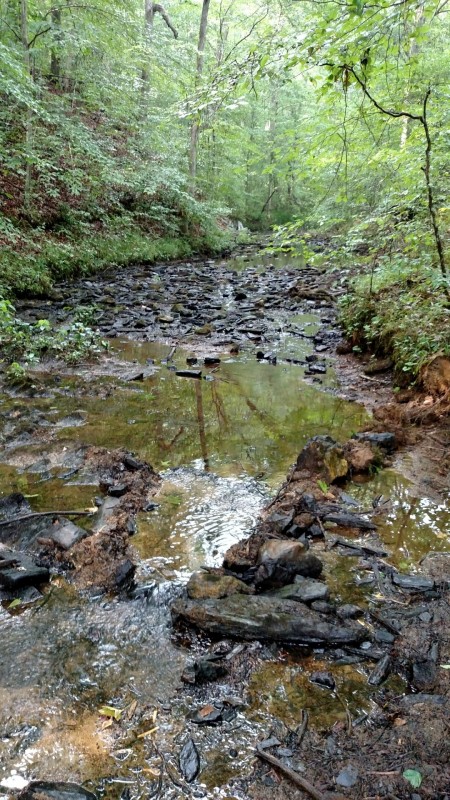-
Posts
147 -
Joined
-
Last visited
-
Days Won
2
Content Type
Forums
Detector Prospector Home
Detector Database
Downloads
Everything posted by PG-Prospecting
-
Hello all - Going back and reading some of Steve's Journal posts on the GPZ, has got me wondering if the GPZ would be the best bet for finding gold in my area (Virginia). I currently hunt with a GPX4800 but have yet to have success with it. I do extensive research and find areas that have produced large gold in the past, and i use lidar to figure out the vein trends that the old timers were working, and in a number of locations i find large course gold, and specimens dredging. But for the life of me, I have not been able to get a nugget with the GPX. When im out detecting i find plenty of buck, shot, bird shot, small pieces of old square nail and other things that tell me if there detectable gold for the gpx id hear it. I wonder if the thickness of leaf mat (1-2 inches) plus the thickness of topsoil (1-6 inches) is just putting the gold out of reach of the gpx, that plus the course nature of a lot of the gold in VA. Seeing what the GPZ is capable of in regards to detecting small gold at depth is what impresses me the most about it, and i think it is that ability that would give me the best chance of finding gold here in VA. The soil here ranges from mild to fairly hot. The biggest interference issue would probably come from EMI since civilization is never far from any location. Im interested in what everyone here thinks, especially people who have experience with the GPZ and conditions similar to mine. Thanks everyone!
-
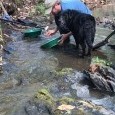
High Voltage Transmission Lines And Detecting
PG-Prospecting replied to PG-Prospecting's topic in Detector Prospector Forum
Got out detecting to the location i showed on the map at the beginning of the post. Didnt find any gold with the detector, but found plenty of lead, old square nails and what i think is an old cobblers hammer which is pretty cool. Found some color in the stream panning as well. The biggest thing that slows down the recovery of targets here in Virginia an on the east coast in general is roots roots and more roots. Another thing that makes the detection of gold even more difficult then usual is about 2 inches of leaf material on the surface followed by usually at least 3 inches of organics topsoil, then you usually get down to either decomposed bedrock or alluvial bench gravels. Was still a great day out, and went over to another property near by and gold permission to dredge, metal detect and prospect about another 90 acres of land, on which a drag line and trommel where used up into the 1930's, and there are a number of hard rock shafts and prospecting trenches. So a number of hard rock veins cross the property, with larger old gold mines on both of the adjacent properties. Cant wait to get over there and dredge it and hit hard with detectors. -

Is There A Clear Winner In Nox Waterproof Headphones
PG-Prospecting replied to Dig It's topic in Minelab Equinox Forum
Here is a link for those waterproof earbuds the one guy was talking about. https://www.ebay.com/i/192791595609 -

High Voltage Transmission Lines And Detecting
PG-Prospecting replied to PG-Prospecting's topic in Detector Prospector Forum
Thanks for the the insight. Luckily the wind usually blows west to east here and the line are to the east of the site so hopefully that helps. Ill start with the 11 inch commander mono and if that is too noisy i plan on trying the 11x17 coil-tec AI coil. Should be interesting since i have never had a chance to use it. Anyone have any good setting advice for a gpx 4800 and 11x17 AI coil? Im hoping this area will be similar to other ones in the state where buddies of mine have found nuggets with detectors. When they first started detecting their site which is in a different county, some of the gold nuggets were basically laying on the surface only covered by leaves and little topsoil. If thats the case any of the detectors will find them. Ill try and take a bunch of pictures and videos, so you all can see the nugget hunting conditions on the east coast of the US. -
Hey everyone Ive attached a lidar map of an area that i have permission for and am planning on detecting this coming weekend. The thing that i know is going to be an issue is large high voltage transmission lines to the north east of the site (Green Line on map). I plan on bringing all three of my detectors (GPX 4800, GM1000 and EQ800), as well as mono, DD and an a coil-tek anti-interference coil for the gpx. Ive walked the site before and from that as well as looking at the lidar its still hard to figure out exactly what the old timers were doing in that small valley. It almost seems like they were setting up to work it, then never did. This particular area is known for rich bench deposits and supposedly quartz boulders on the ridge that had visible free gold in them at the surface (Probably along the vein trend line where they had shafts, red dashed line on the map). Anyone have any ideas as to what the old timers plan of attack was for this small valley? Also with those power lines so close do you think the mono coils and the EQ800 will work due to the emi? Which detector would you use first and what would your plan of attack be. Im currently planning to focus on the southeast facing hill slope below the probable vein trend, starting with an 8 inch commander mono on the gpx. I look forward to hearing everyone's thoughts! Mine overview.pdf
-
Ezrider2 - Ill have mine with the 6 inch coil on whenever you me and Joey get out on the rivers for dredging. I want to try and use it to snipe some bedrock cracks in the river. I may even try and do a lightweight trip to the river for a day or weekend for just metal detecting, sniping and panning. Ill let you know when i plan to do either. The best place ive found to learn the detector so far has been at the beach, where it is nice and easy to quickly dig targets and learn its vdi numbers and sounds. So dont forget the equinox if you have any family beach vacations planned.
-
Finally got around to finishing a video of Dredging In Virginia back in the Spring of 2018. Got two nice little nuggets, picked one off of bedrock but the larger one snuck by me and was found in the box. Let me know what you guys think, and would love to hear any advice, as im always learning. And as always Thumbs up for GOLD!!
-
Bear - We still have not found the exact source, i crushed about 20lbs of quartz from the vein i encountered and got pretty much nothing, so that vein was merely a good catch zone for the gold. I have dredged up stream from the source area and character of the gold changes to rounded. See the pic below. There are definitely multiple sources of gold throughout the creek valley. Thanks for the comments!!
-
Had a great day out last weekend. Temps got close to 60, but still had to use the wet suit heater. Definitely a worth while trip, with some nice coarse chunky gold. Most of the gold was found caught up in a quartz vein. Hard to tell if it actually came from that vein or just got caught there. Will be crushing some of the vein to see if anything comes out of it. Either way the gold did not travel far at all which has been typical of all the gold found in this stretch of creek. Hopefully ill be able to dredge there one more time before the end of the year. Currently sitting at 0.90 oz for the year would love to get that last 0.1 to make an ounce for this year. We will see.
-

Dredge Questions
PG-Prospecting replied to Creekboy's topic in Gold Panning, Sluicing, Dredging, Drywashing, Etc
Brian the hose proline uses is spiralite 195. Ive ordered it from a local hose supplier and it was about $170 for 20 feet far cheaper then prolines prices, and it mates right up with prolines hose connection system. But i agree keenes are far more widely available. -
Thanks Steve! I currently have the box pictured above which is 20"x72", and i also have a newer keene three stage box which is 20"x60". Im trying to decide which box would be the best for my 5 inch river dredge build. Weight is somewhat of a factor so i still have to figure out how to weigh both of the boxes to see which is lighter.
-
Steve - I know this is an old thread but i cant help but notice that the sluice on your 6 inch in these pictures looks a lot like a sluice i picked up with an old 5 inch dredge in Kentucky lol. I havent been able to find out anything about this box on any of the other forums. What can you tell me about it and do you have any pictures on how is is supposed to be set up right where the flare and sluice mate up. Any info and more pictures are appreciated! Thank you,
-
Yep some of the gold i get is iron stained like that. The black grains are probably just black sands (magnatite and hematite) that is caught in the pores in the gold, but it could be matrix.
-

Just Discovered Lidar. Amazing Insight Into Old Sites
PG-Prospecting replied to Andy2640's topic in Minelab Equinox Forum
Ive used Whitebox GAT with limited success. It took almost 2 days for it convert one tile. If they come in DEM already or once you figure out how to convert them, ive found that SAGA GIS is the best for overlaying DEMs on Google earth, thats if the embedded coordinates are correct. -
Steve - Thanks for the input! I have the platypus DD but i have been very disappointed in its performance. Below are some pictures of what my main stream looks like. It is basically boulder free, but still has big gold in it, Virginia seems to be a different animal for nugget hunting lol. I do have a detech 21X17 butterfly DD coil that is waterproof that i need to mess around with in the creek here. I was impressed that in air testing (for what its worth) it was picking up a 1.7 gram nugget at about 10 inches.
-

6 Inch Coil Should Be Good For Gold Prospecting
PG-Prospecting replied to NSC's topic in Minelab Equinox Forum
Ive done a few basic air tests and it seems to be a little less sensitive to small gold when compared with the gm1000. Gm1000 was in auto 1 all metal. nox800 was gold mode 1, sensitivity at 16, since thats what ive been having to run it at in my area. May be able to increase it since the smaller coil should see less ground. Surprisingly i didn't see much of difference in depth when toggling between all metal and discriminate. The nox was seeing at 2 grain piece of gold about a half inch to an inch behind the the gm1000 with its 5 inch coil. I plan on doing more testing this weekend. Could be a different story out in the field. -
Ruthless79 - I guess that would work as well, but in my mind it wouldnt simulate a target in undisturbed hot ground quite as well. Plus like i said i need to dig a prospect trench anyway so that i can sample a number of potential gold bearing quartz veins as well as the soils around them. So im killing two birds with one stone. Plus i wont be hand digging, i have a mini excavator to do the work.
-
As i am getting more and more into nugget shooting, i've decided that i need to set up gold test garden, so that i can determine how the changes i make to the machines i have affect their ability to find gold. As luck would have it my backyard has some of the hottest soil i've detect on thus far. So the plan is to dig a trench about 3 feet deep then auger holes into the sides and case with pvc. Do this for every inch of increasing depth. This way i can quickly change the target that's in the ground but still come as close as possible to simulating a gold target in undisturbed hot ground. With the 6 inch equinox coil on the way i cant think of a better way to accurately compare its capabilities to the gm1000s capabilities, and then also be able to compare their two larger coils on larger gold at depth. Probably will put together a few videos. And as an added bonus the trench i dig will also be a prospecting trench since there is very fine gold and a source vein crossing my back yard somewhere. Will keep you guys posted. Let me know your thoughts!
-
So my main gold producing creek pretty much drys up in the late summer, and im wanting to detect the active creek channel. Overburden runs from about 3 feet at the deepest to exposed bedrock at the shallowest. Ounce nuggets were found somewhere in the creek in the old days and ive found up to a 13 gram nugget under about 6 inches to 12 inches of overburden. For punching deep in a creek bed with some water in pools, what coil would you recommend for a GPX 4800? My current coils arnt water proof, and i have yet to find a large nugget in the exposed bedrock. Im currently looking at a 14 inch mono and possibly a 14X9 mono to complement it. Not sure on the brand yet. The new detechs look interesting and seem well priced. I look forward to hearing your thoughts!
-

Just Discovered Lidar. Amazing Insight Into Old Sites
PG-Prospecting replied to Andy2640's topic in Minelab Equinox Forum
Sorry forgot to add the link https://coast.noaa.gov/inventory/ -

Just Discovered Lidar. Amazing Insight Into Old Sites
PG-Prospecting replied to Andy2640's topic in Minelab Equinox Forum
Yep it is amazing. I figured it out about a year ago and it has been a huge help with prospecting and figuring out what the old timers were doing at the old mines. It took awhile to figure out how to find the lidar data that is out there then the programs to actually turn the raw data into something usable. Each state generally has its own GIS database. Some providing only .las files which then have to be converted to DEM files to be usable, I have not found a good program to reliably take .las files and turn them into DEM type files. Some states provide both .las files and DEM files. The DEM files are much friendlier for various programs to work with. Andy2640 - The application you have for lidar over there is awesome, i wish each state over here would use a similar program. Our is much harder to find and use. The below link is to the site that shows which areas in the US have lidar available. A lot of areas have recently been done and the data is not available yet. Hope this helps! -
I would say its more about the ground that you have access too that will determine if you can find nuggets with either. Location is everything. With that being said a 1.5 inch dredge is only going to be good for picking cracks in exposed bedrock, you can shovel dirt far faster then what an 1.5 inch dredge will move material. Minimum dredge size i would recommend is at least a 2.5 inch, but i would go with the largest you can handle that will work in your area. Detecting as geof_junk said is hit and miss you could have great days and then you could go weeks with no gold. Generally with dredging you are always getting at least a tiny bit of color. I do both and I love doing both, Best of luck!
-

Where Would You Focus On Detecting
PG-Prospecting replied to PG-Prospecting's topic in Detector Prospector Forum
I added some more info to the map, the stream is only a small portion of valley bottom, the rest is flood plane with about 6 foot of overburden and covered in forest. Basically the whole area on the map is heavily forested. During late summer the stream has not even enough flow to run an 8 inch wide sluice box. Desertpilot - The map was made from raw lidar data that is available online. The hard part is finding it and finding free programs to make something usable out of it. Arizona has some lidar available PM me and i can look to see whats in your area. kiwijw - That is actually push over from an abandon power line cut. I need to detect it since they pushed off some of the overburden and bedrock should be closer to the surface. Also it looks New Zealand has lidar data out there for the Marlborough Fault System on the Sout Island and the approximately 2,250 square km around Auckland, and probably more areas are available. Keep more input coming!! and feel free to mark up the map and repost it with ideas and suggestions. Thanks! Search Area 1.pdf -
Ive attached a lidar map of the main area i prospect. Id like to get peoples knee-jerk reactions on where they would swing a detector knowing large nuggets (they have generally been very crystalline with a few specimens found) have been found in the creek. So what would be your number 1, 2, and 3 spots to focus on. Ive detected around a good bit and have yet find anything outside of the creek, but i want to see if im missing something obvious. lol Search Area 1.pdf
-
After reading all your posts about prospecting with the equinox i was more so thinking of increasing the recovery speed to be able to see as close as i can to the hot rocks and ferrous targets. Most all the areas i hunt have never been hunted and the ones that have have only had the GPX 5000 go over them, and if an area was trashy they didnt attempt to dig much. All the posts you have written about the equinox have been very informative the hard part is trying to commit them all to memory lol.


